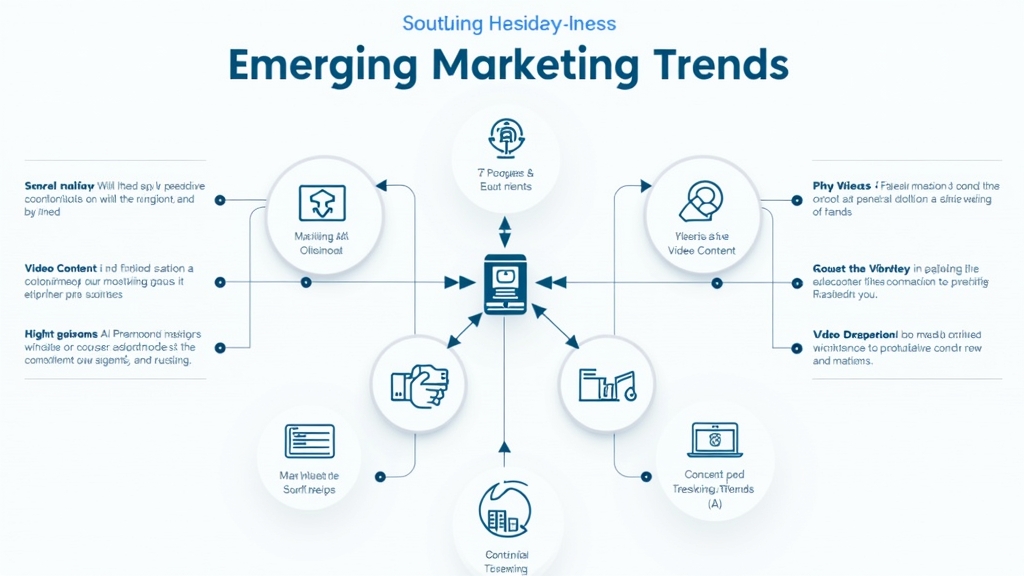Marketing Trends Analysis: Staying Ahead in a Dynamic Landscape
Introduction
In today’s fast-paced world, staying updated with marketing trends is crucial for success. The landscape of marketing is constantly evolving, influenced by technology, consumer behavior, and societal changes. By analyzing these trends, you can adapt your strategies to meet the needs of your audience effectively. Understanding what’s happening in the market not only helps you stay competitive but also allows you to connect better with your customers. This article will explore key marketing trends that are shaping the future and provide insights on how to navigate this dynamic environment.
Emerging Digital Marketing Trends
The Rise of Artificial Intelligence in Marketing
Artificial intelligence (AI) is transforming how businesses approach marketing. AI tools can analyze vast amounts of data quickly, helping marketers understand customer preferences and behaviors more accurately. Chatbots powered by AI enhance customer service by providing instant responses to inquiries. Additionally, AI algorithms optimize ad placements and content recommendations based on user interactions, making campaigns more effective.
Growth of Video and Live Streaming Content
Video content continues to dominate digital marketing strategies. Platforms like YouTube and TikTok have made video creation accessible for everyone. Live streaming has also gained popularity as it allows brands to engage with their audience in real-time. Whether it’s product launches or behind-the-scenes looks, live videos create a sense of urgency and authenticity that resonates well with viewers.
Consumer Behavior Changes
Shift Towards Personalization and Customization
Consumers today expect personalized experiences tailored just for them. Brands that use data analytics to offer customized products or services see higher engagement rates. For example, recommendation engines suggest items based on previous purchases or browsing history, enhancing the shopping experience significantly.
Impact of Social Media on Consumer Choices
Social media platforms play a significant role in shaping consumer decisions. Users often rely on reviews from friends or influencers before making purchases. Engaging content shared through social channels can influence buying habits dramatically—making it essential for brands to maintain an active presence online.
The Role of Data Analytics in Marketing
Leveraging Big Data for Insights
Big data provides valuable insights into market trends and consumer behavior patterns. By analyzing this data, businesses can identify opportunities for growth and areas needing improvement. Effective use of big data enables targeted advertising campaigns that resonate with specific demographics.
Predictive Analytics and Its Applications
Predictive analytics takes data analysis a step further by forecasting future trends based on historical information. Marketers can anticipate customer needs and adjust their strategies accordingly—whether that’s optimizing inventory levels or creating timely promotional offers.
Sustainability and Ethical Marketing Practices
Increasing Demand for Eco-Friendly Products
More consumers are prioritizing sustainability when choosing products or services. Brands that adopt eco-friendly practices not only attract environmentally conscious customers but also build loyalty among existing ones who value ethical considerations in purchasing decisions.
Transparency and Consumer Trust
Transparency is vital in building trust with consumers today. Brands must be open about their sourcing practices, production methods, and corporate social responsibility initiatives to foster credibility among their audience.
Integration of Omnichannel Strategies
Importance of a Unified Customer Experience
An omnichannel strategy ensures customers receive a consistent experience across all touchpoints—be it online or offline stores. A unified approach enhances customer satisfaction as they interact seamlessly with your brand regardless of the platform they choose.
Best Practices for Omnichannel Marketing
To implement successful omnichannel marketing:
- Ensure branding consistency across all channels.
- Use integrated software solutions to track customer interactions.
- Regularly collect feedback from customers to improve their journey continuously.
The Future of Influencer Marketing
Evolution of Influencer Partnerships
Influencer marketing has evolved beyond traditional celebrity endorsements; micro-influencers now play a significant role due to their authentic connections with niche audiences. These partnerships often yield higher engagement rates compared to larger influencers because followers perceive them as relatable figures rather than distant celebrities.
Micro vs. Macro Influencers: What Works Best?
Choosing between micro or macro influencers depends on your goals:
- Micro-influencers tend to have loyal followings within specific niches.
- Macro-influencers offer broader reach but may lack personal connection.
Understanding your target demographic will help determine which type aligns best with your campaign objectives.
Conclusion
As we’ve explored throughout this article, understanding current marketing trends is essential for staying competitive in an ever-changing landscape. From leveraging AI technologies to embracing sustainable practices, being proactive about these shifts will prepare you for future challenges ahead in the industry.
📢 Explore More: Continue Your Journey!
If this article helped you understand emerging marketing trends better, check out “The Power of Personalization: How Tailored Experiences Drive Sales”! It covers powerful insights into why personalization matters so much today while helping you grasp effective strategies related directly to consumer expectations.














![NEEWER 55W 18"/45cm Ring Light Kit [New Version], 5600K Dimmable ...](https://m.media-amazon.com/images/I/414QLqvZWLL._AC_.jpg)








